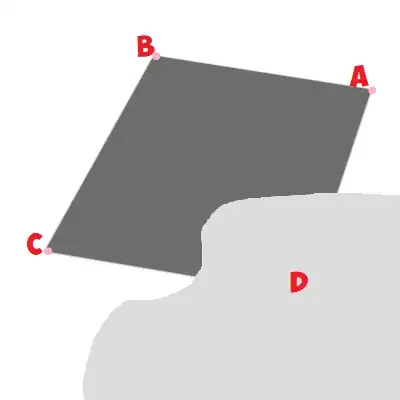I have a picture of three vertices of a square of edge of length 1, that has one vertex covered.
Is it possible to recover the 2d coordinates (in the picture) of the 4th vertex?
Or is it not enough information?
For now I came up with a system of 18 equations for 19 variables:
let $ A,B,C,D $ denote 2D coordinates of the square (in the picture)
let $ a,b,c,d $ denote 3D coordinates of the squre (in reality)
assume the camera is at 0
and picture plane is at $z=\omega$
since $0, A, a$ are on a line (and similarily $0,B,b$; $0,C,c$; $0,D;d$)
$a_x = \alpha A_x$ $a_y = \alpha A_y$ $a_z = \alpha \omega$ $b_x = \beta B_x$ $b_y = \beta B_y$ $b_z = \beta \omega$ $c_x = \gamma C_x$ $c_y = \gamma C_y$ $c_z = \gamma \omega$ $d_x = \delta D_x$ $d_y = \delta D_y$ $d_z = \delta \omega$
since it is a square of side of 1, we also have:
$|a-b| = 1$
$|a-c| = \sqrt 2$
$|a-d| = 1$
$|b-c| = 1$
$|b-d| = \sqrt 2$
$|c-d| = 1$
visible vertices A,B,C; supposed square in dark gray
